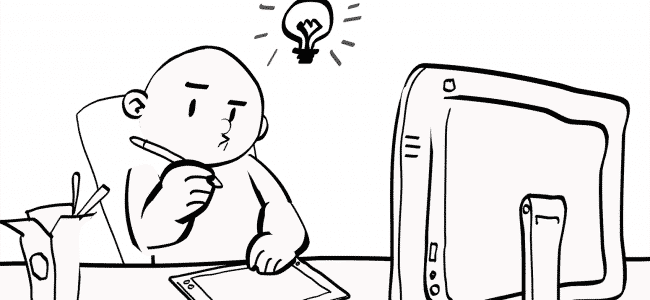A Short Guide to Creating Characters for Your Explainer Videos

Some of the most effective animated explainer videos are those that contain characters. In fact, according to research, videos that manage to tell a compelling story using entertaining and engaging characters improve conversions by more than 20 percent.
Using characters in your videos is effective for a number of reasons. For starters, people like to see other people — even if they are cartoon drawings — that look like them. Showing people who look like your audience in situations and settings that they can relate to builds a connection. People actually feel that since the video operates with characters who resemble themselves, it talks to them directly and engages them on a whole new level.
Characters show your audience that you understand them, and how your product can benefit them. It’s the concept of wish fulfillment that’s been used in advertising for generations: when your audience sees people like themselves solving problems and improving their lives, they are compelled to buy to fulfill their own wishes.
Beyond relating to your audience, animated characters can help set the mood and tell a story in your video. Characters are important to storytelling. They are a representation of the message, and bring the tale to life. Through colors, clothing, facial expressions, and actions, your animated characters can set the mood, establish the scene, and demonstrate the problem and solution better than words can.
And of course, animated characters are just fun. You want your audience to be entertained, and characters are the easy way to do it.
Characters can do a lot for your videos, but before you begin working in an online animation creator, you need to give some thought to the characters you want to create and what will work best for your brand.
Different Types of Characters
The type of character you choose depends on the type of video you are creating, your audience, and the story you’re telling. Your characters help set the mood and build a connection with the audience, so getting the character type right is important. Some of your options include:
Cartoon characters. Most often associated with animation, cartoon characters are drawings that are ideal for portraying over-the-top reactions or unbelievable situations. These characters tend to be colorful with exaggerated features and expressions. When you are aiming for humor or entertainment, or want to emphasize certain features or aspects of your story, cartoon characters are ideal.
Realistic characters. More realistic than typical cartoon characters, realistic characters resemble actual people. They have realistic proportions and look like your target audience. In fact, these animated characters are the best to use when you are trying to reach a specific target audience.
Stylized characters. These characters don’t resemble actual people in any way, beyond the general shape and placement of their features. These are more generic characters designed to appeal to a wider audience that may not be specifically defined; for example, a mobile health app that can be used by people in a variety of age groups to manage multiple conditions. These characters are also well suited for more serious videos that aren’t relying on humor and exaggeration so heavily.
Stick figures. Complicated stories and explanations where the story is more important than the characters are well suited for stick figures or iconic representations of characters. When your audience isn’t defined — or you are trying to avoid alienating any particular group — stick figures can serve in the important storytelling role.
Choosing the character type depends largely on the tone, mood, and content of your script. Know what you’re trying to accomplish, and use a character to achieve that goal.
Designing Your Character
Once you’ve selected a character style, it’s time to flesh out the details for the animation. As you design a character, keep a few important points in mind.
Match the character to the audience. If you are using a cartoon or somewhat realistic character, be sure that they match your audience. Consider developing a buyer persona and studying images of people in your demographic to get an idea what they look like, what clothing they might wear, and some mannerisms or other details that will allow you to create more authentic characters.
Make your characters unique. Your characters represent your brand, so make them stand out and reflect who you are and what you stand for. The same generic character that every other company uses isn’t going to tell your company’s unique story. Use what makes your business different to create characters that embody those differences.
Work with subtleties. Everything from the colors you select to the shape of the character’s body can send a message to your audience. Darker colors set a more sinister mood, for example, while lighter colors are more positive. Play with different subtle changes to create the perfect character. Creating characters for your explainer videos can be a lot of fun, and when you create the perfect character, it can carry over into the rest of your marketing and help build your brand. So have some fun, and create a new character to tell your story.




